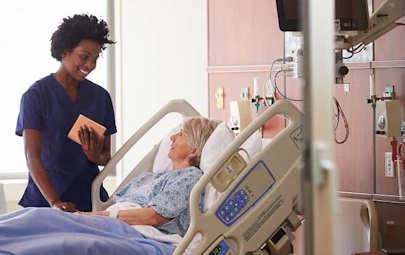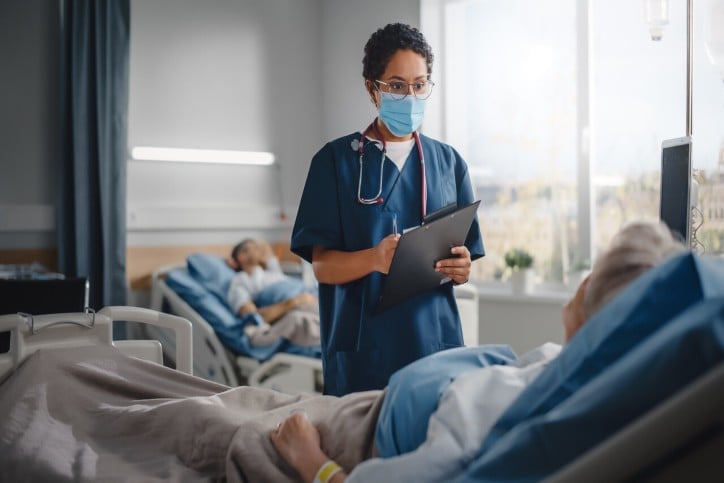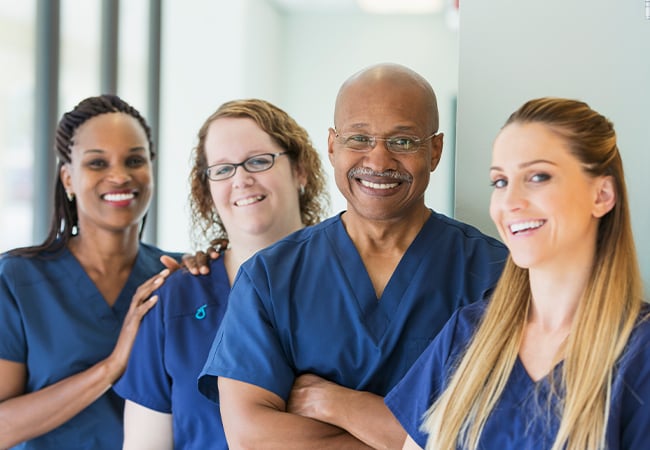
Nurses Can Move the Needle on Addressing Social Determinants of Health
How much do you know about your patients’ lives and living conditions beyond the walls of the hospital or medical office?
For example, do you know where they live? Is it safe? Do they have ready access to healthy food and reliable transportation? Do they have someone nearby who can help them out? Do they need help understanding discharge instructions, or wound care instructions, or information about taking medications?
Understanding the environment in which your patients live and work is essential for helping them experience the best possible outcomes. Armed with this knowledge, you can connect them with resources that can help. These resources might include information about a nearby food bank that offers fresh, healthy food, or a connection with an agency that provides transportation to doctors’ offices.
In fact, nurses should make addressing social determinants of health (SDOHs) the very foundation of the care they provide, said Lillian Pryor, MSN, RN, CNN, president of the American Nephrology Nurses Association (ANNA).
“It is vital that we consider where our patients are born, live, work, socialize etc. before we can begin to effectively manage our care for them,” she said.
Incorporating SDOH into your care approach
Social determinants of health can be grouped into five domains, according to the U.S. Department of Health and Human Services:
• Economic stability
• Education access and quality
• Healthcare access and quality
• Social community and context
• Neighborhood and built community.
Health disparities can and do develop when those factors aren’t taken into account. The only way to improve health equity and improve outcomes in our communities is by addressing them, said Jenna Simone, BSN, RN, market director with Activate Care, a company that uses technology to facilitate better coordination of health and social services.
"I feel like now, more than ever, we need to think about healthcare differently," Simone said.
Tanya Rogers, MSN, RN, CNN, national secretary for the ANNA board of directors, stressed the importance of educating yourself about the communities you serve.
"Being actively involved in communities with underserved populations is a great way to address SDOH and improve population health, but it must be done from a culturally competent space, and that is why the education piece is so important,” said Rogers."

"Local health departments often complete needs assessments for the communities they serve," she continued. "If nurses are uncertain on where to begin, I would say visit their local health department’s website to review what needs and gaps have been identified by their public health leaders. Once they have that information, they can partner with organizations that are working to address those needs."
This deeper knowledge of your community can help shape the questions that you ask, too.
Some patients may be reluctant to admit to food insecurity, substance abuse or unsafe living conditions. They may not want to admit that they shouldn’t be living alone or that they live with someone who puts them in danger. They may not want to admit they don’t really understand all information they received about caring for themselves. Or they may feel embarrassed that they don’t have enough money to pay for certain things.
But that’s just the sort of information that can make a big difference in patient outcomes. And as a nurse, Simone said, your role as a patient advocate is to help your patients live their healthiest lives.
As a former operating room nurse, Simone was dedicated to providing exceptional care to her patients. She would get frustrated when her patients would leave the hospital with detailed post-op instructions, only to reappear in the emergency department a few weeks later.
Little communication existed between the various service providers and caregivers who touched her patients’ lives, and inevitably, things fell through the cracks.
Simone took her current job because she appreciated the idea of having a central hub to bring together all those resources. She suggested that, if your employer doesn’t have a SDOH assessment tool in place, it might be time to ask about adopting one, and about establishing some sort of referral management system. Ultimately, the goal is to keep patients healthier--and out of the hospital.
Nurses can learn something, too
Pryor stressed the importance of listening, of finding out what is important to your patients and not stereotyping them. “Regard each patient individually, and include the family as well,” she suggested.
Nurses should be open to learning something from their patients, too, said Caroline Ortiz, MSN, MPHRN, NC-BC, an associate professor in the Pacific College of Health and Science’s Holistic Nursing Program.
She is investigating traditional healing practices among people who have come to the United States from Mexico as part of her doctoral dissertation, and she can point to a key example of a traditional practice that might benefit many other people. People make time and space for a heart-to-heart talk, a “plática,” and share their deepest worries or concerns to "desahogar" (literally, to undrown one’s self). Participating can benefit people’s emotional and spiritual well-being, which contributes to their physical health, as well.
“It’s a practice of healing in traditional medicine as a way of sharing your burden with someone who will listen,” said Ortiz. “It’s about that feeling of community—that I’m not going through this by myself.”
Additional Nursing Resources:
- AMN Passport: Our all-in-one nursing app for booking nursing jobs.
- Nursing Salary & Benefits: AMN Healthcare offers our nurses some amazing salaries and benefits. Find out what's in store for your nursing career today.
- Travel Nurse Licensing: Find out about nursing requirements for all 50 states.
- Exclusive Facilities: AMN Healthcare has relationships with the most sought-after healthcare providers.
- Refer-a-Friend: Make up to $2,000 per referral.
Latest News
Part 2 - The Other Side of the Bed: A Journey of Resilience and Advocacy with Sarah Boes
Hear Sarah Boes’ journey of resilience, mental health, and nursing innovation. This episode of Nursing Uncharted will inspire nurses and students.
Operating Room (OR) Travel Nursing Jobs: Requirements, Pay and Best Locations
Explore OR travel nursing jobs. Learn about requirements,
Operating Room (OR) Travel Nurse Salary: How Much Can You Make in 2025?
Discover the earning potential and perks of operating room travel nurse jobs in 2025. Learn how to maximize your salary and find top-paying contracts.
Top Medical Surgical Travel Nursing Trends You Need to Know
Discover the latest trends in Med-Surg travel nursing, from high-demand locations to innovative care technologies. Maximize your career opportunities today!
How to Balance Work & Travel as a Med-Surg Travel Nurse
Learn how med-surg travel nurses can balance demanding work schedules with travel adventures. Find tips for time management, self-care, and choosing assignments.
Best Cities for Telemetry Travel Nursing Jobs
Discover the best cities for telemetry travel nursing jobs in 2025, exploring opportunities in Austin, San Diego, Atlanta, and more. Get insights and career tips today!
ICU Travel Nurse Jobs: Certifications That Boost Your Pay
Want better pay and opportunities as a travel nurse? Boost your skills with these certifications tailored for ICU travel nurse jobs. Learn more today!
Essential Skills Every Telemetry Travel Nurse Needs
Master these 7 telemetry travel nurse skills to thrive in











